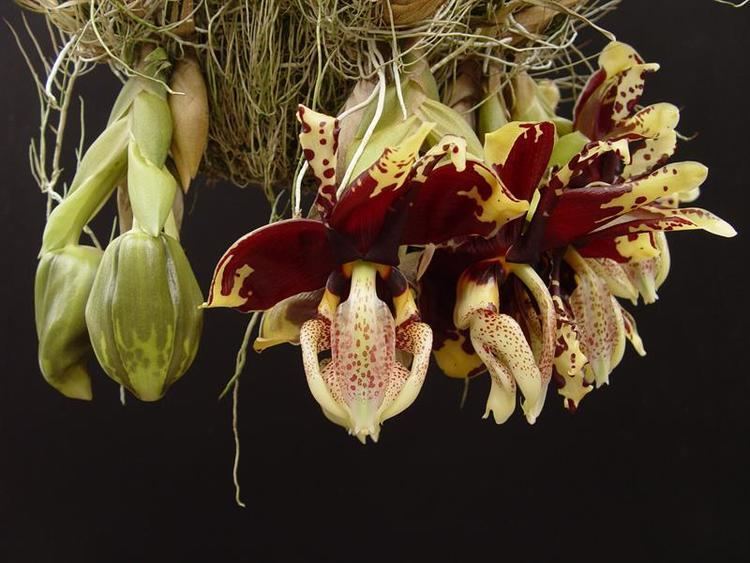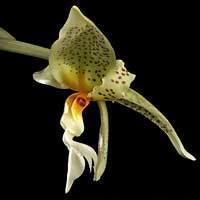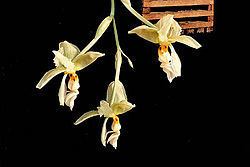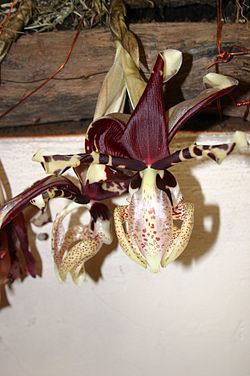Tribe Maxillarieae Scientific name Stanhopea Rank Genus | ||
 | ||
Lower classifications Stanhopea tigrina, Stanhopea wardii | ||
Repotting stanhopea orchid in a basket removing rotting pseudobulb
Stanhopea is a genus of the orchid family (Orchidaceae) from Central and South America. The abbreviation used in horticultural trade is Stan. The genus is named for the 4th Earl of Stanhope (Philip Henry Stanhope) (1781-1855), president of the Medico-Botanical Society of London (1829-1837). It comprises 55 species and 5 natural hybrids. These epiphytic, but occasionally terrestrial orchids can be found in damp forests from Mexico to Trinidad to NW Argentina. Their ovate pseudobulbs carry from the top one long, plicate, elliptic leaf.
Contents
- Repotting stanhopea orchid in a basket removing rotting pseudobulb
- Stanhopea culture
- Species
- Natural hybrids
- Intergeneric hybrids
- References

Stanhopea is noted for its complex and usually fragrant flowers that are generally spectacular and short-lived. Their pendant inflorescences are noted for flowering out of the bottom of the containers in which they grow, lending themselves to culture in baskets that have enough open space for the infloresence push through. They are sometimes called upside-down orchids.

Primitive Stanhopeas
Most Stanhopea flowers flash prominent, elegant horns on the epichile. The exception are the species; S. annulata, S. avicula, S. cirrhata, S. ecornuta and S. pulla. A second group have short or truncated horns, they include the species; S. candida, S. grandiflora, S. reichenbachiana, S. tricornis and the natural hybrid S. x herrenhusana. The structure of the labellum of this group is in general, not as complex as other members of the genus.

With most Stanhopea flowers lasting three days or less, the flowers must attract pollinators very quickly. These chemical attractants are generated in the hypochile, attracting the male euglossine bees to the flower. These male euglossine bees are known to be important pollinators of Stanhopea flowers, collecting fragrances at these flowers over their lifetime and storing them in their hind tibia. Bees in the Euglossini tribe, including Eulaema meriana, are known to pollinate these flowers supposedly because the orchids can deceptively mimic the form of a female and her sex pheromone. When the bee touches down on the flower, a great effort is made to collect chemical scent - he eventually slides on the waxy surface of the hypochile, gliding down on the slippery lip to exit the flower. The long column is touched in the process, resulting in the bee taking up pollinia at the very tip of the column. When the bee slides down another flower, the pollinia are deposited on the sticky surface of the stigma.

The majority of species are robust plants that grow readily in cultivation. For relatives of Stanhopea see Stanhopeinae and the closely related sister subtribe Coeliopsidinae.

Stanhopea culture
Species

